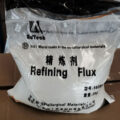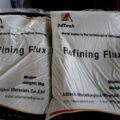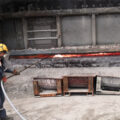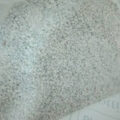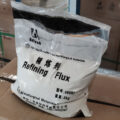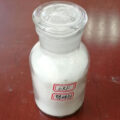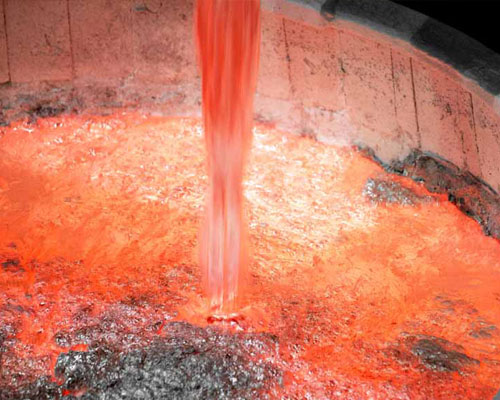
It is important to have a Flux in Recycled Aluminum that separates the metal from the waste. The secondary aluminum industry is concerned with the production of aluminum from slag, scum, and waste. Therefore, the recycled aluminum contains impurities and oxides, which must be separated during the melting process to separate valuable metals. The waste includes all kinds of scum, slag, recycled waste, discarded cans and containers, recycled castings, etc. Due to the nature of some waste materials, including their impurities, oxides, and the size of individual fragments, it is necessary to use salt fluxes to minimize oxidation and improve slag formation during the melting process, thereby increasing the recovery rate of valuable metals.
In particular, the dross-type waste produced by the primary aluminum company through the remelting furnace is the most valuable but also one of the most difficult materials in the secondary aluminum industry.
The main components of dross are a variety of alumina, hydrated alumina and entrained metallic aluminum, as well as a small amount of magnesium chloride, aluminum carbide, aluminum nitride and a small amount of calcium, silicon, magnesium, iron, zinc and manganese.
The secondary aluminum recycling industry requires one or more fluxes and process combinations to provide efficient metal recycling in rotary kilns.
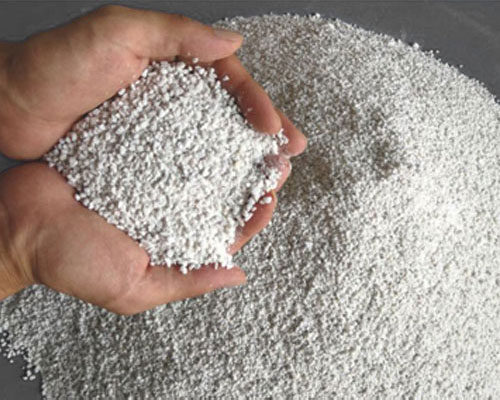
Generally, all rotary furnaces use salt flux, such as pure NaCl or a mixture of NaCl and KCl. In addition, for rotary kilns, it is customary to charge the Flux in Recycled Aluminum into an empty furnace, melt the salt, and then charge the waste into the molten melt. This is especially true for mixtures of NaCl and KCl. The advantage of this method is that it provides a flux with significant fluidity, which acts like water. This fluidity depends on the composition, temperature and concentration ratio of the flux and the inert components in the charge. In order to take advantage of this fluidity, the concentration ratio of the flux to the inert component must be greater than 1, and more flux than the inert component is used in the charge, because too little flux will result in a low metal recovery rate.

